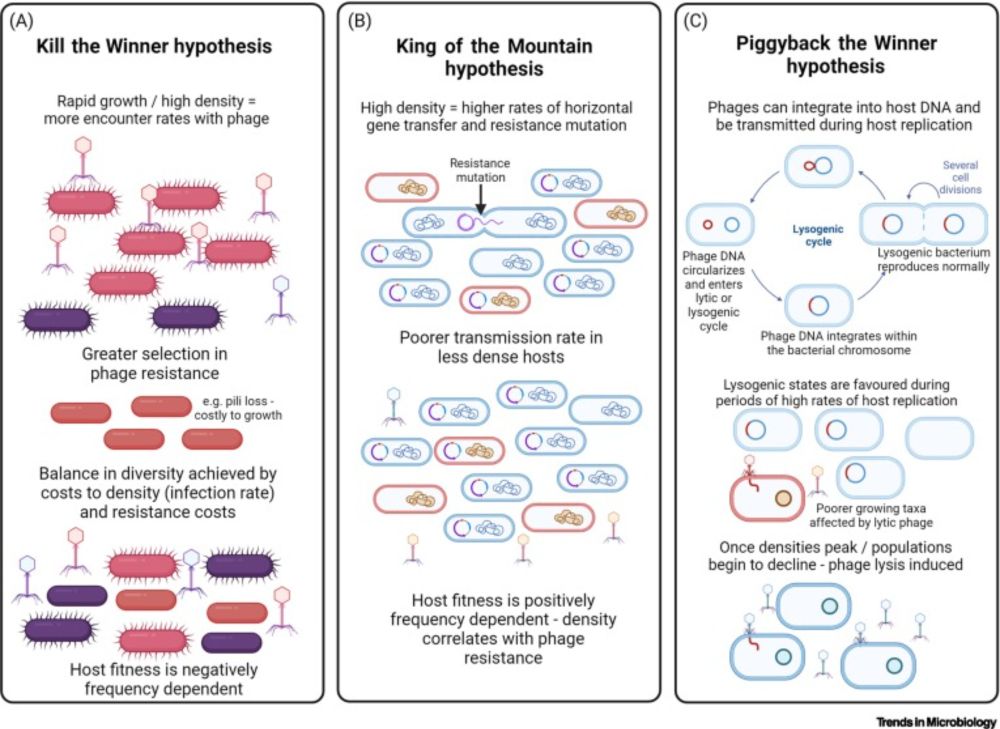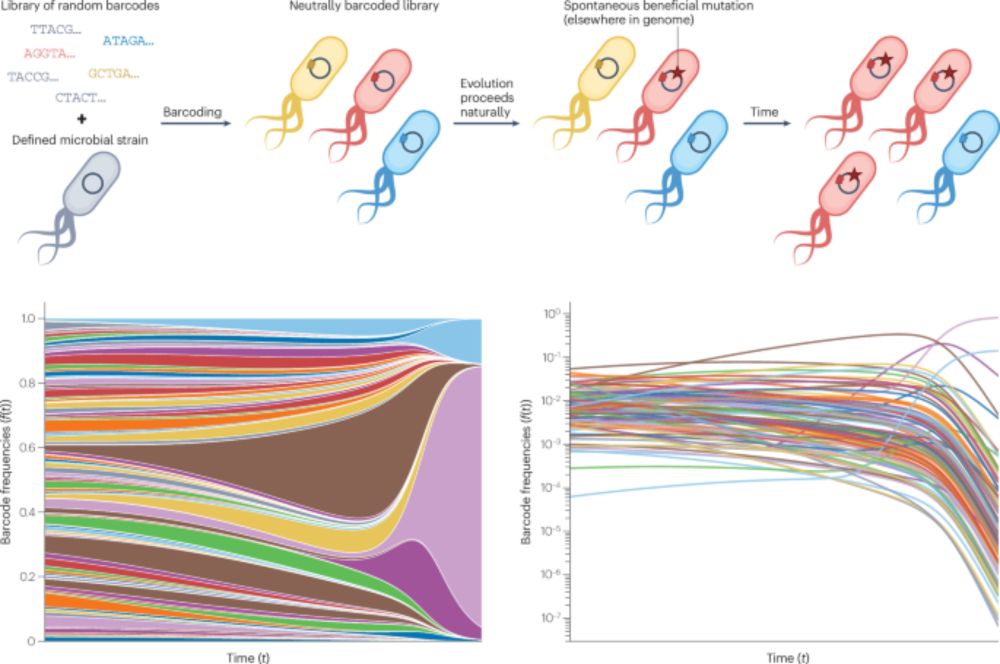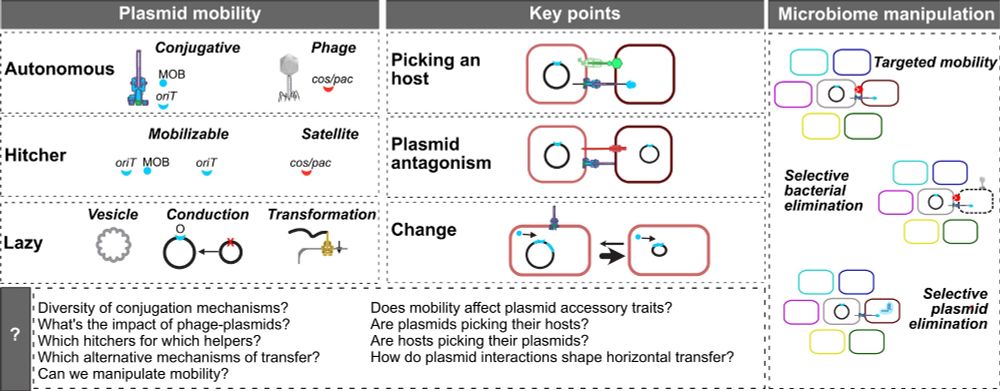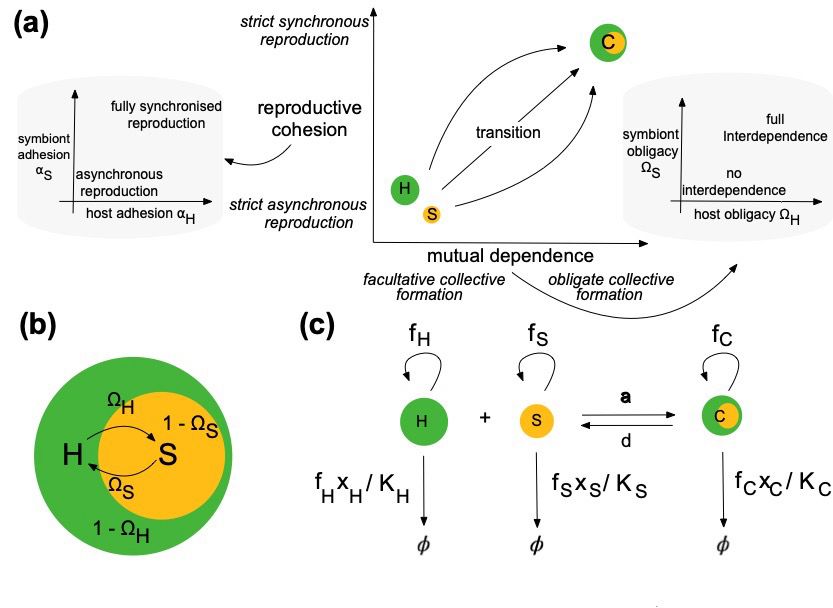Afra Salazar
@salazarafra.bsky.social
140 followers
180 following
14 posts
PhD student in microbial ecology and evolution at the University of Lausanne salazarafra.github.io | Literary fiction, philosophy & cinema
Posts
Media
Videos
Starter Packs
Reposted by Afra Salazar
Reposted by Afra Salazar
Reposted by Afra Salazar
Reposted by Afra Salazar
Benoit Pons
@benoitjpons.bsky.social
· Sep 4

Phage provoke growth delays and SOS response induction despite CRISPR-Cas protection | Philosophical Transactions of the Royal Society B: Biological Sciences
Bacteria evolve resistance against their phage foes with a wide range of resistance
strategies whose costs and benefits depend on the level of protection they confer
and on the costs for maintainance....
doi.org
Reposted by Afra Salazar
Reposted by Afra Salazar
Reposted by Afra Salazar
Jana Huisman
@jhuisman.bsky.social
· Aug 25

Microbial communities demonstrate robustness in stressful environments due to predictable composition shifts
Environmental stress reduces species growth rates, but its impact on the function of microbial communities is less clear. Here, we experimentally demonstrate that increasing salinity stress shifts com...
www.biorxiv.org
Reposted by Afra Salazar
Joao Ascensao
@joaoascensao.bsky.social
· Aug 21

Frequency-dependent fitness effects are ubiquitous
In simple microbial populations, the fitness effects of most selected mutations are generally taken to be constant, independent of genotype frequency. This assumption underpins predictions about evolutionary dynamics, epistatic interactions, and the maintenance of genetic diversity in populations. Here, we systematically test this assumption using beneficial mutations from early generations of the Escherichia coli Long-Term Evolution Experiment (LTEE). Using flow cytometry-based competition assays, we find that frequency-dependent fitness effects are the norm rather than the exception, occurring in approximately 80\% of strain pairs tested. Most competitions exhibit negative frequency-dependence, where fitness advantages decline as mutant frequency increases. Furthermore, we demonstrate that the strength of frequency-dependence is predictable from invasion fitness measurements, with invasion fitness explaining approximately half of the biological variation in frequency-dependent slopes. Additionally, we observe violations of fitness transitivity in several strain combinations, indicating that competitive relationships cannot always be predicted from fitness relative to a single reference strain alone. Through high-resolution measurements of within-growth cycle dynamics, we show that simple resource competition explains a substantial portion of the frequency-dependence: when faster-growing genotypes dominate populations, they deplete shared resources more rapidly, reducing the time available for fitness differences to accumulate. Our results demonstrate that even in a simple model system designed to minimize ecological complexity, subtle ecological interactions between closely related genotypes create frequency-dependent selection that can fundamentally alter evolutionary dynamics. ### Competing Interest Statement The authors have declared no competing interest.
doi.org
Reposted by Afra Salazar
Reposted by Afra Salazar
Reposted by Afra Salazar
Meaghan Castledine
@mcastd.bsky.social
· Nov 15

Critically evaluating the relative importance of phage in shaping microbial community composition
The ubiquity of bacteriophages (phages) and the major evolutionary and ecological
impacts they can have on their microbial hosts has resulted in phages often cited
as key drivers shaping microbial com...
www.cell.com
Reposted by Afra Salazar
Afra Salazar
@salazarafra.bsky.social
· Jul 23
Reposted by Afra Salazar
Reposted by Afra Salazar
Reposted by Afra Salazar
Cameron Thrash
@jcamthrash.bsky.social
· Jul 21

Experimental evolution in an era of molecular manipulation - Nature Reviews Genetics
In this Review, Ascensao and Desai discuss how methodological advances in genotype and phenotype manipulation are transforming experimental evolution approaches and providing new insights into the und...
www.nature.com
Reposted by Afra Salazar
Reposted by Afra Salazar
Alvaro Sanchez
@asanchezlab.bsky.social
· Jul 16














